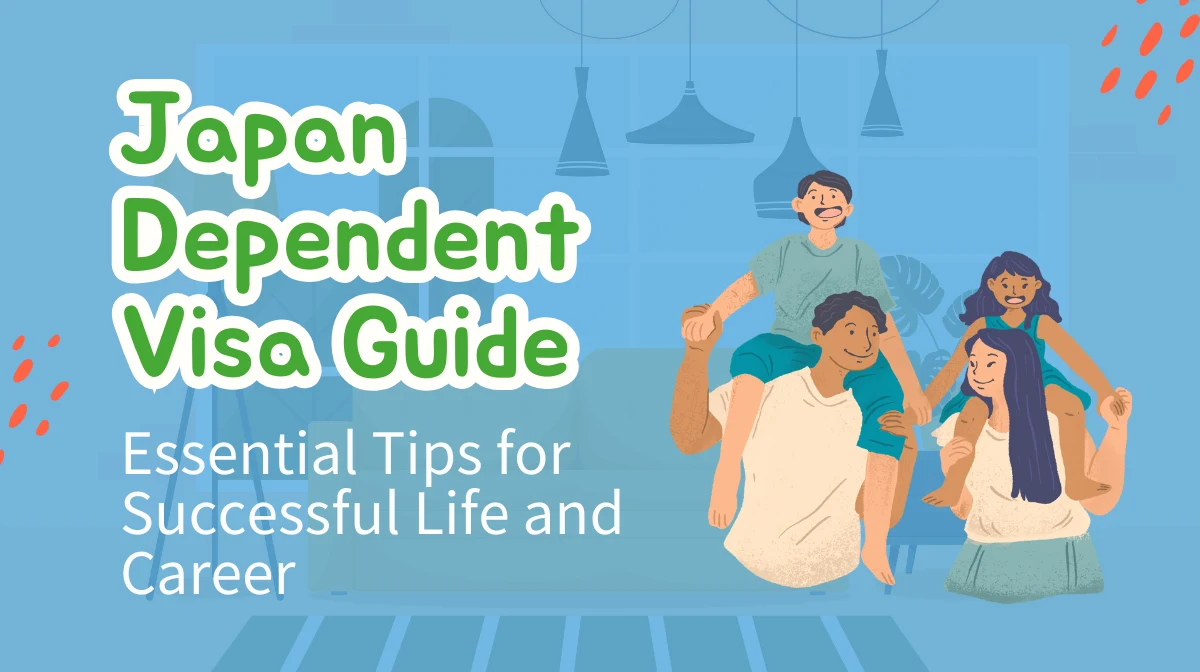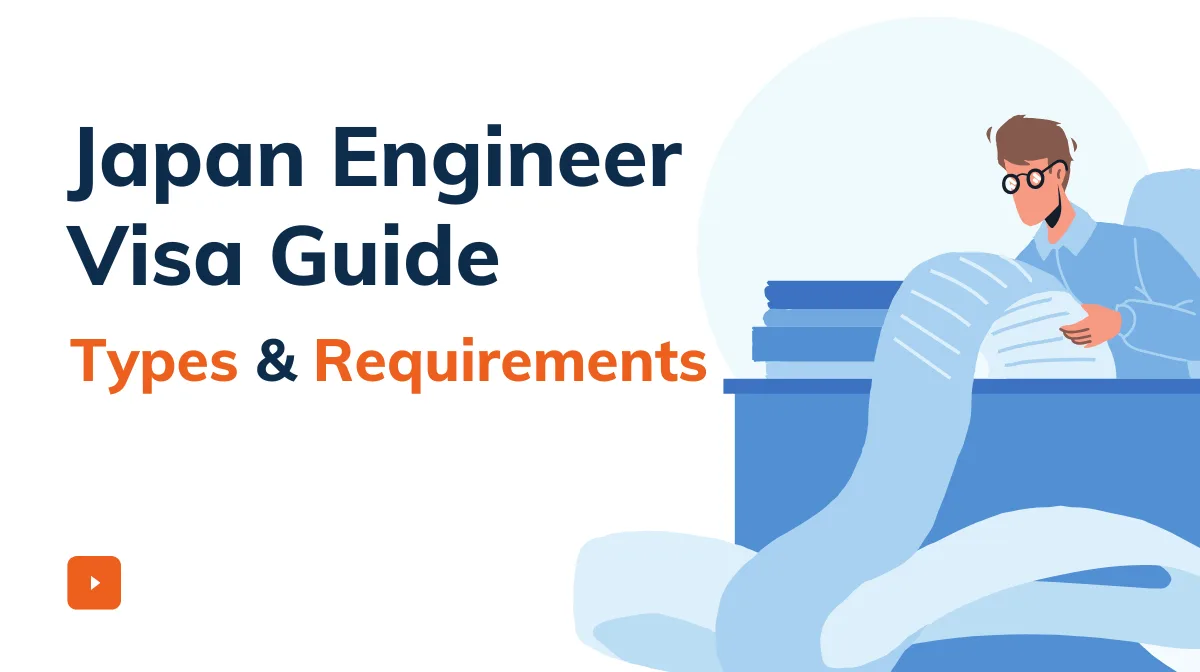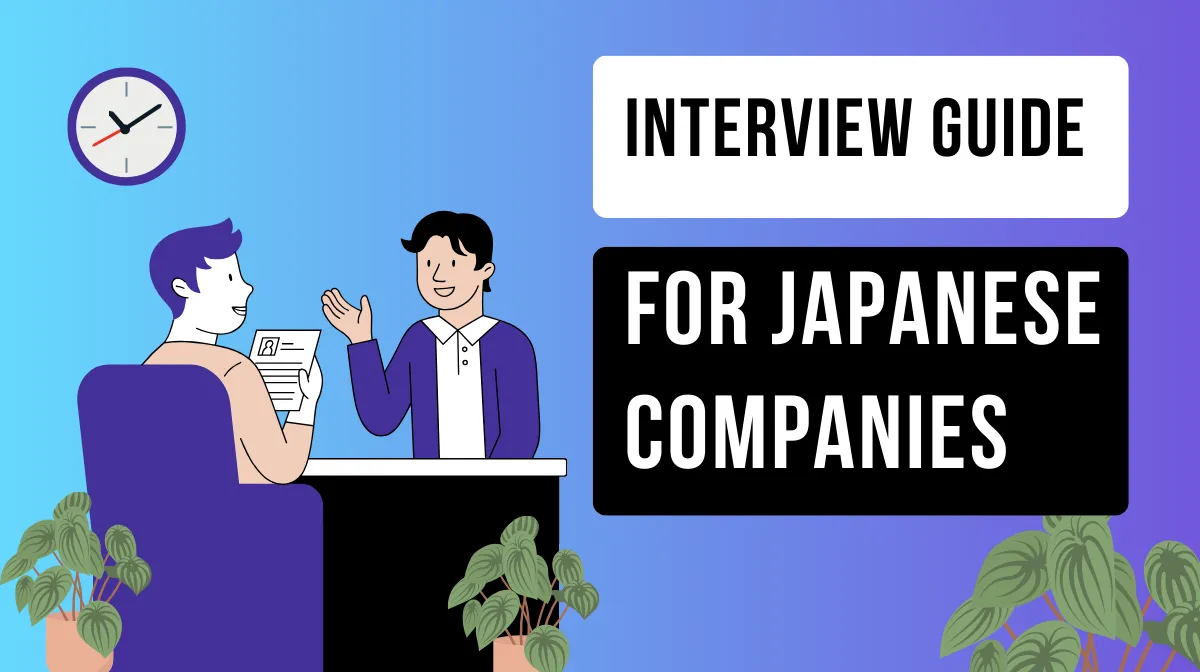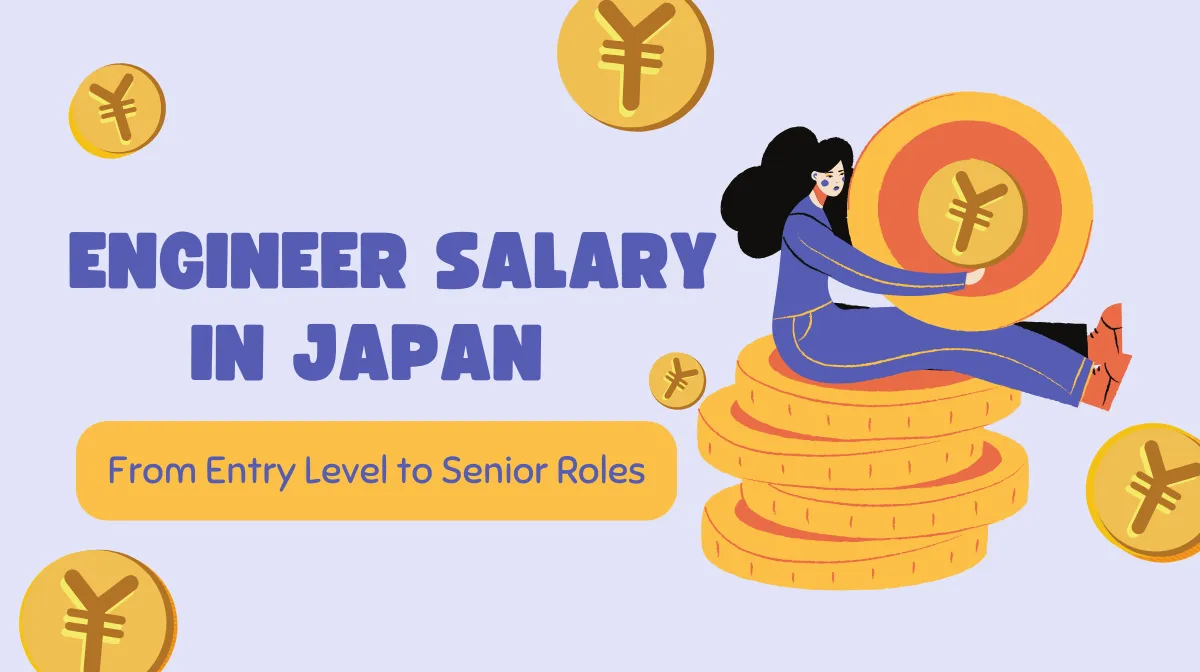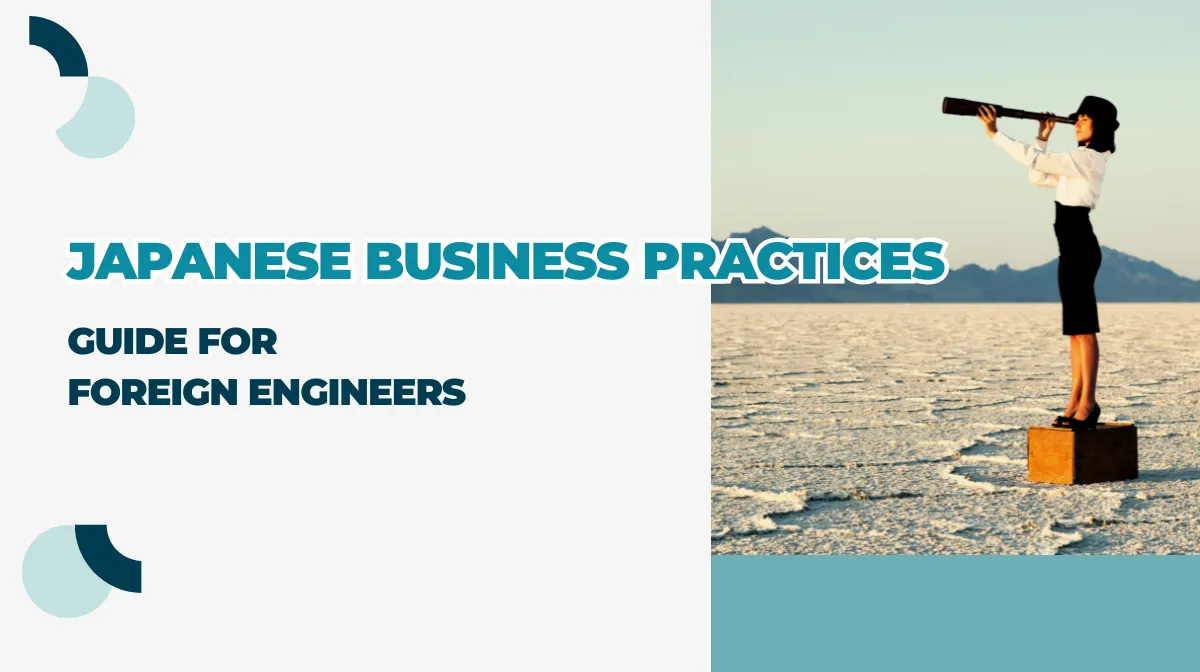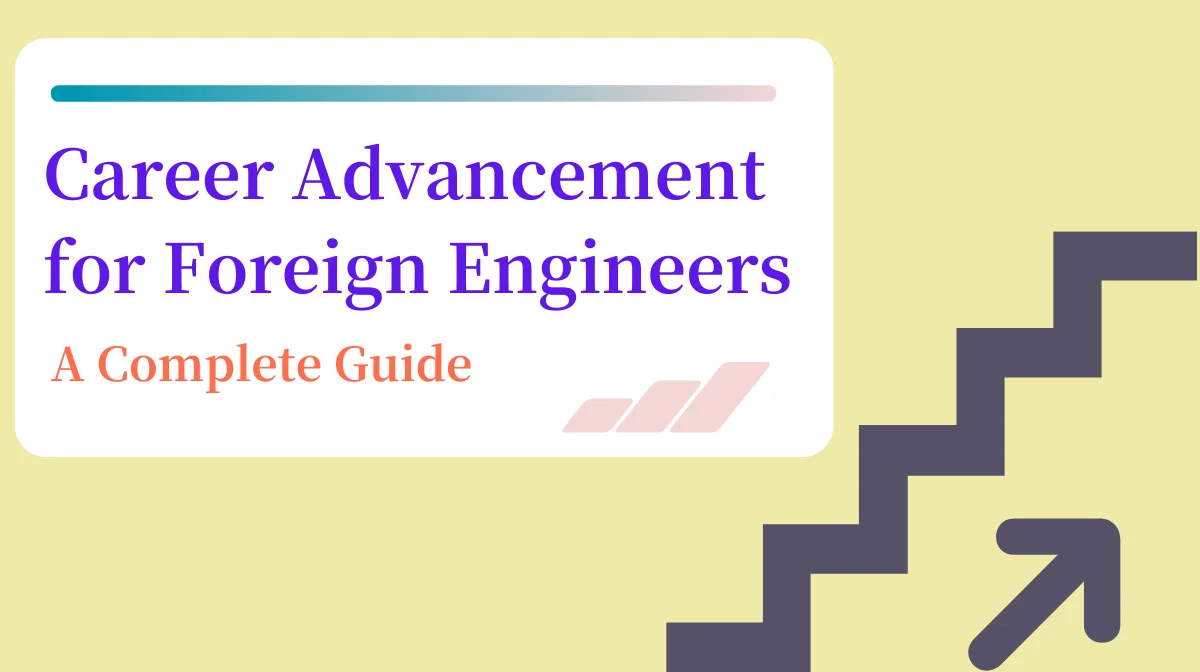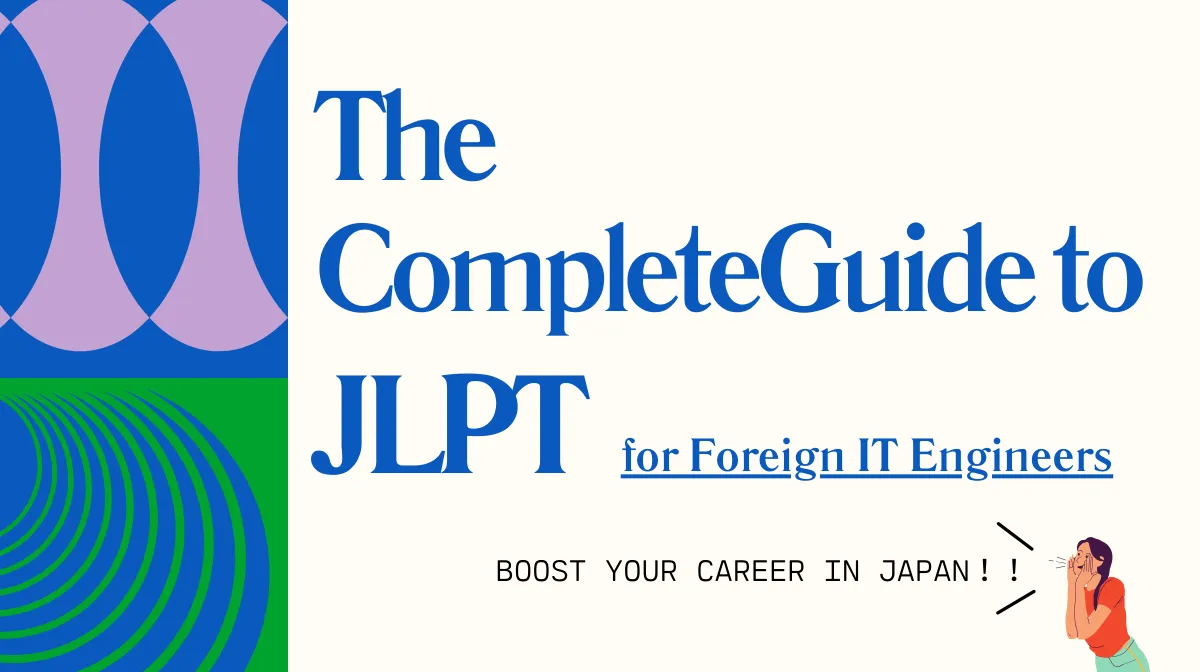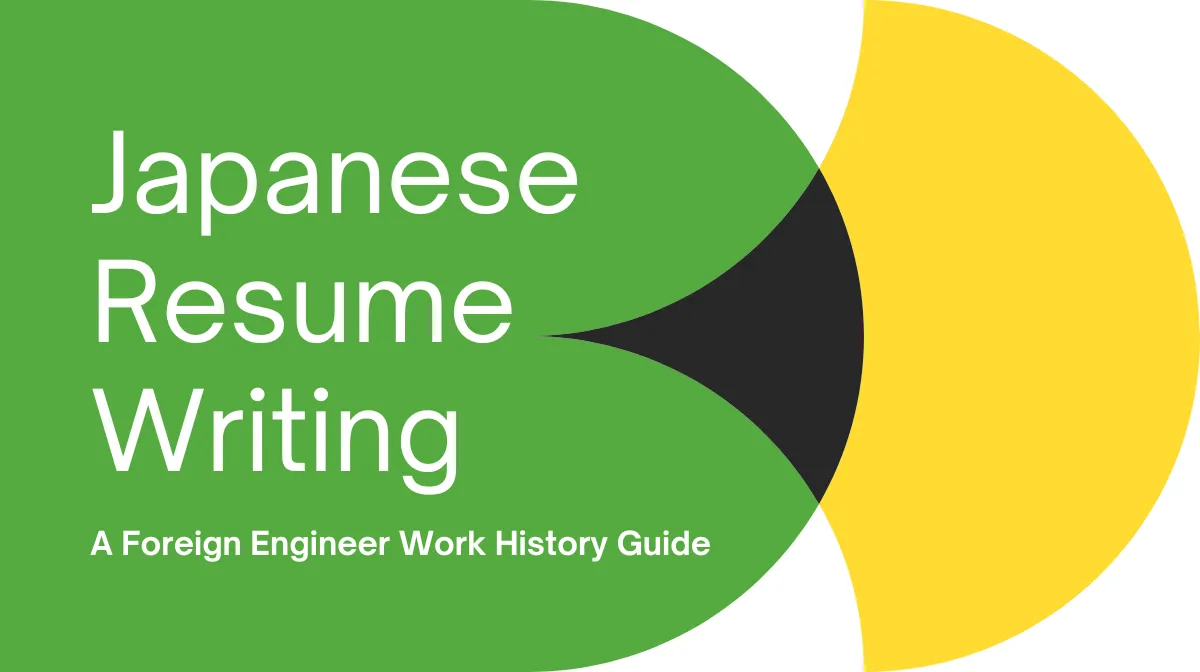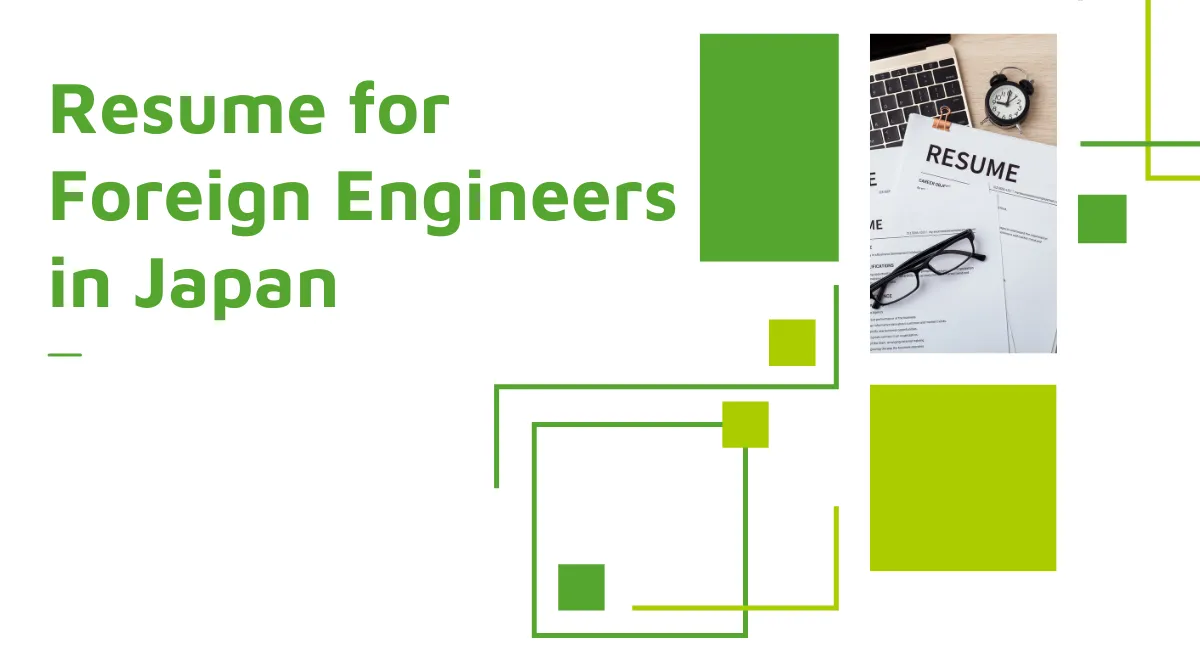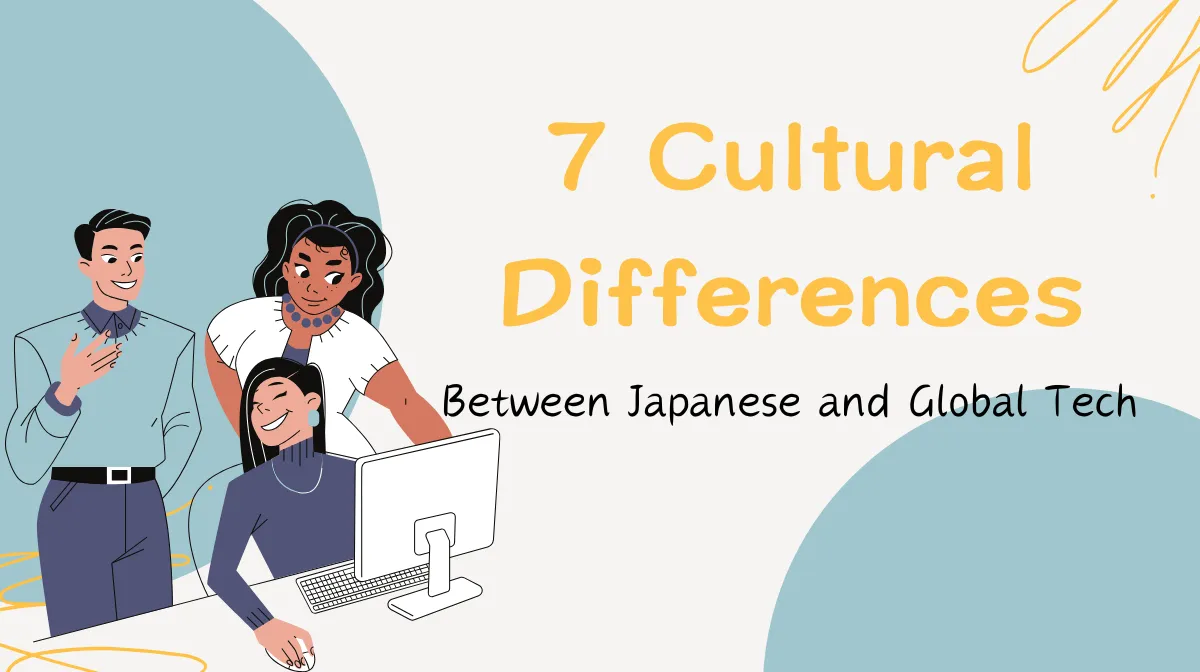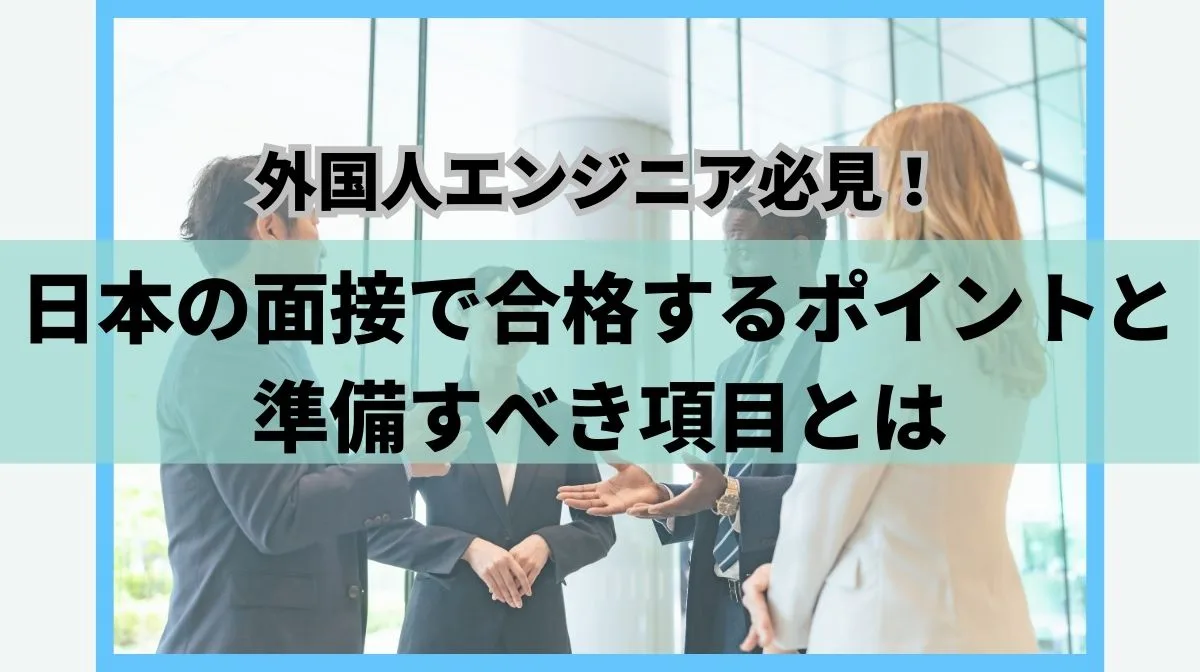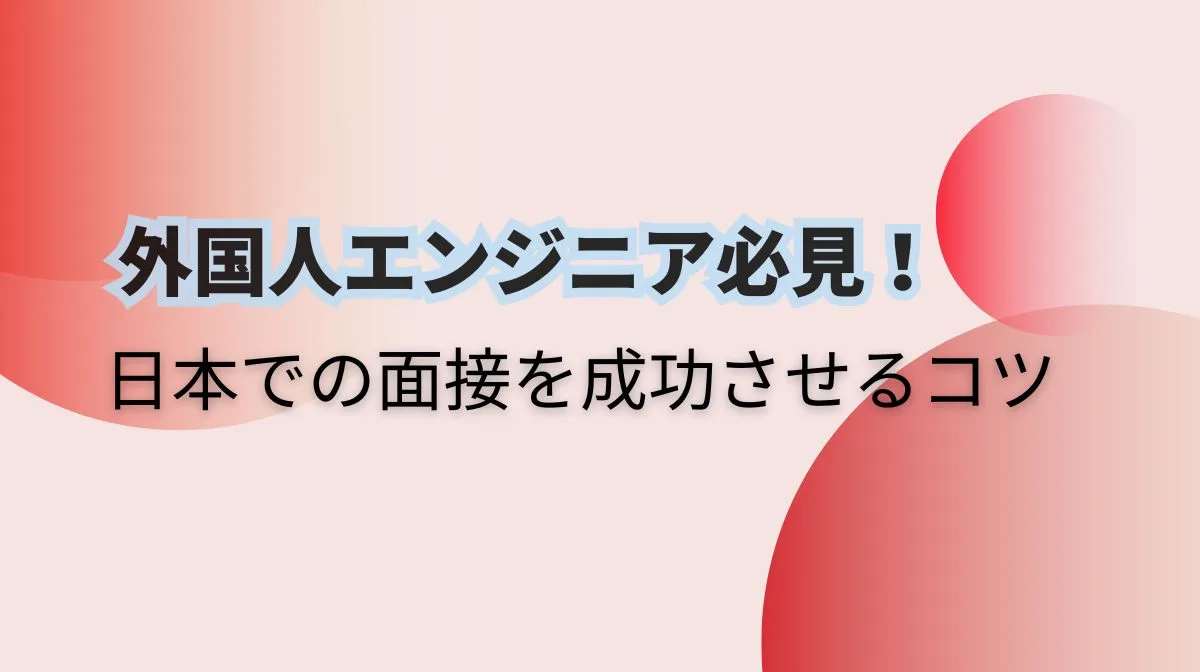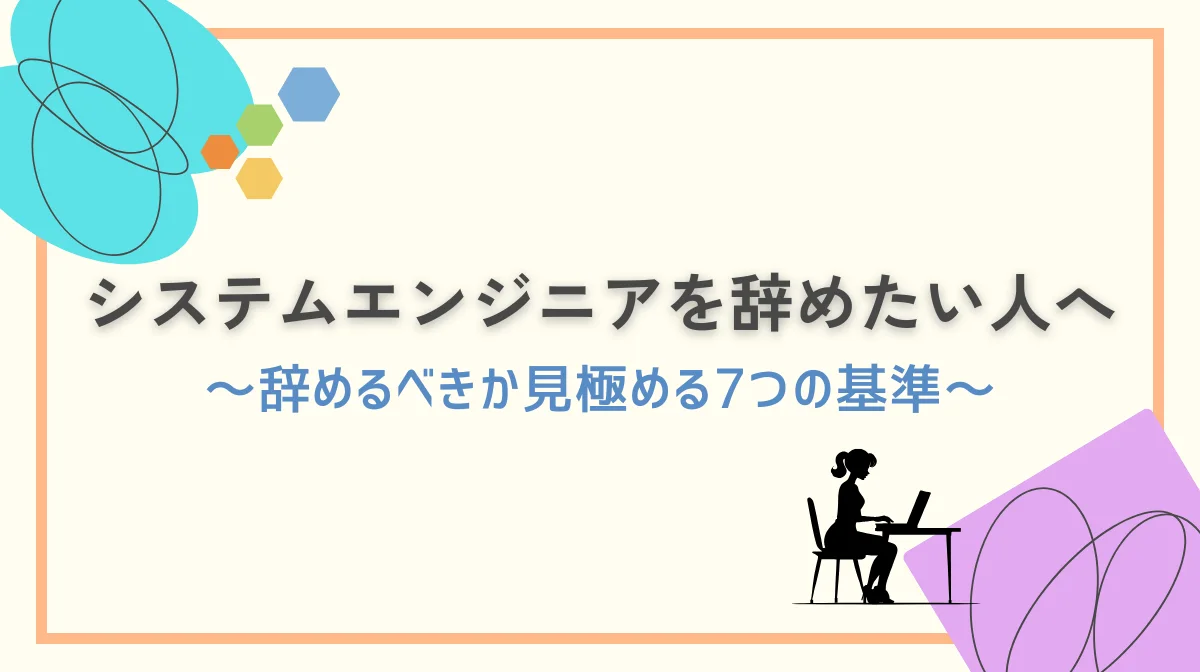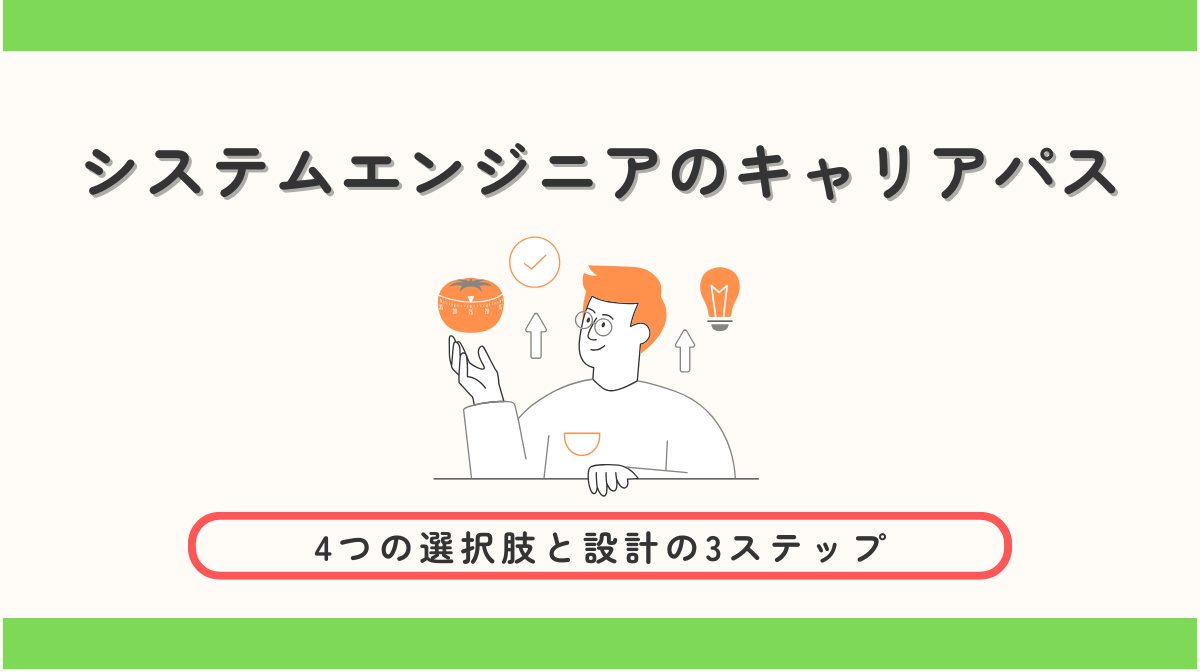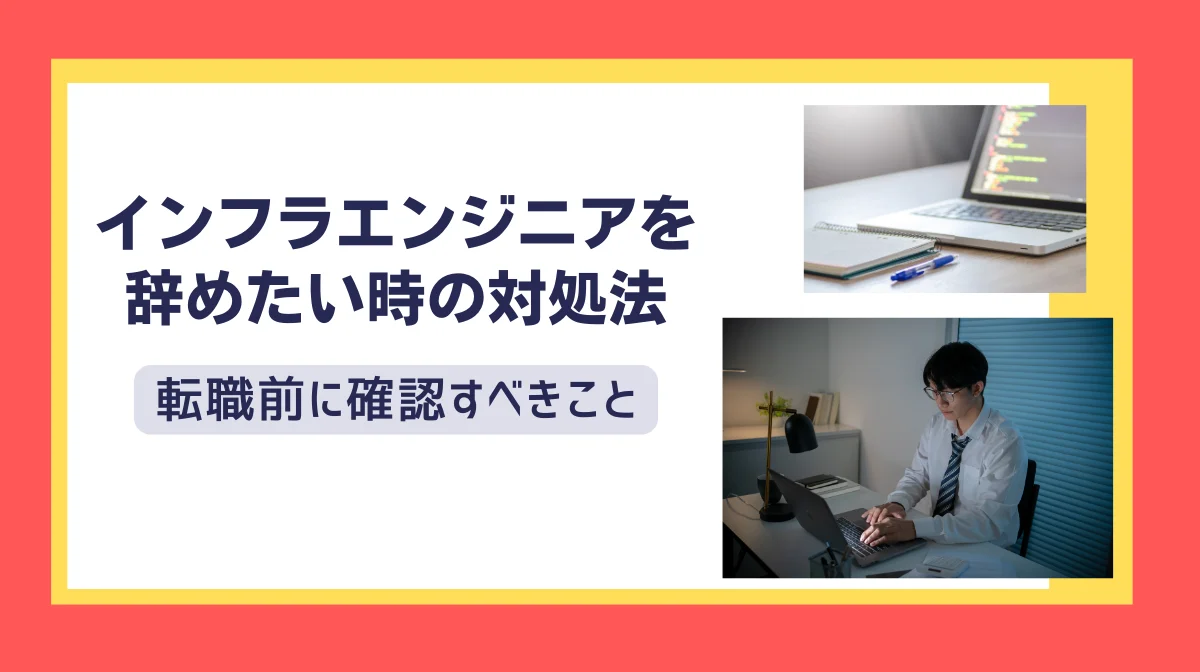Foreign IT professionals in Japan need to understand the Japan dependent visa system for successful family reunification and career advancement. This guide covers application processes, work restrictions, and strategies for transitioning to full-time IT roles.
- How to apply for Japan dependent visa successfully.
- Work limits and 28-hour rules for visa holders.
- Steps to change from dependent to work visa status.
1. What is a Japan Dependent Visa?

The Japan dependent visa allows spouses and children of foreign workers to live in Japan. For IT engineers, this visa enables family unity while building careers in Japan’s growing tech industry.
Companies increasingly support family accompaniment to retain skilled foreign talent, making the Japan dependent visa more valuable than ever.
Who Qualifies for Japan Dependent Visa?
Japan dependent visa eligibility is limited to immediate family members of legal foreign workers.
Eligible family members
- Legal spouses (married couples only)
- Children (biological, adopted, or legally recognized)
Parents, siblings, and extended family cannot obtain Japan dependent visa status. Children qualify typically until age 18, though financially dependent adults may receive approval.
Required Work Visas for Japan Dependent Visa Sponsorship
Only specific work visas enable Japan dependent visa sponsorship. IT engineers commonly hold these qualifying statuses.
Primary IT engineer visas
- Engineer/Specialist in Humanities/International Services
- Highly Skilled Professional
- Business Manager
Technical trainees and language students cannot sponsor Japan dependent visas.
Japan Dependent Visa Requirements
Three core requirements determine approval success.
Financial capacity
requires sufficient income to support family without public assistance. Standard thresholds include 2.5 million yen annually for spouse only, increasing by 300,000 yen per child.
Genuine dependency
means family members rely on your financial support, proven through remittance records and income documentation.
Valid relationships
require official certificates (marriage, birth) with Japanese translations.
■Related Reading
Understanding Japan’s visa landscape is crucial for IT professionals planning their career path and family reunification strategy.
2. How to Apply for Japan Dependent Visa
Japan dependent visa applications typically involve bringing family from overseas through Certificate of Eligibility procedures. This process requires careful document preparation and timeline management.
Certificate of Eligibility Process
The Certificate of Eligibility streamlines Japan dependent visa applications. You apply in Japan, then family members use the certificate for visa applications at Japanese consulates.
Application timeline
- Document preparation (2-4 weeks)
- Application submission (same day)
- Processing period (1-3 months)
- Certificate delivery to family overseas
- Consulate visa application (2-4 weeks)
- Entry to Japan
Essential Japan Dependent Visa Documents
Complete documentation prevents delays and improves approval chances.
Sponsor requirements
- Valid residence card and passport copies
- Current tax certificates (assessment and payment)
- Employment verification letter
- Financial statements showing stability
- Housing documentation
Family member requirements
- Relationship certificates (marriage/birth)
- Valid passport copies
- Japanese document translations
- Regulation photographs
Perfect preparation reduces processing from three months to approximately five weeks.
■日本でエンジニアとしてキャリアアップしたい方へ
海外エンジニア転職支援サービス『 Bloomtech Career 』にご相談ください。「英語OK」「ビザサポートあり」「高年収企業」など、外国人エンジニア向けの求人を多数掲載。専任のキャリアアドバイザーが、あなたのスキル・希望に合った最適な日本企業をご紹介します。
▼簡単・無料!30秒で登録完了!まずはお気軽にご連絡ください!
Bloomtech Careerに無料相談してみる
3. Working with Japan Dependent Visa
Japan dependent visa holders cannot work without “Permission for Activities Outside Status of Residence” This system allows limited employment while maintaining legal compliance.
The 28-Hour Weekly Work Limit
Work permission restricts employment to 28 hours weekly maximum across all jobs, with strict enforcement and severe violation penalties.
Limit specifics
- 28 hours maximum in any seven-day period
- Combined total across multiple employers
- Approximately 112,000 yen monthly income potential
IT opportunities within limits
- System monitoring and technical support
- Data management and database work
- Website maintenance and updates
- Programming assistance and quality testing
- Multilingual technical documentation
Japan’s flexible IT work culture accommodates the 28-hour limit through remote work and project-based arrangements.
Permission Types for Japan Dependent Visa Holders
Comprehensive permission
covers general employment without employer restrictions, suitable for most part-time IT work.
Individual permission
applies to specific arrangements like freelancing or consulting where hours are difficult to monitor.
Building Skills on Japan Dependent Visa
The 28-hour work limit provides valuable opportunities for career development. Many use this time strategically to gain Japanese workplace experience and improve language skills.
Development benefits
- Japanese business practice exposure
- Professional network building
- Portfolio development for future applications
- Language improvement through workplace interaction
■Related Reading
Learn how to navigate Japanese workplace culture and interview processes to maximize your career opportunities while on dependent status.
4. Changing from Japan Dependent Visa to Work Visa
Transitioning from Japan dependent visa to work visa removes the 28-hour limitation and enables full-time career opportunities, including overtime, job changes, and permanent residency pathways.
Engineer/Specialist Visa Requirements
The Engineer/Specialist visa serves most IT professionals transitioning from Japan dependent visa status.
Qualification options
- Bachelor’s degree from accredited university
- Japanese vocational certification
- Ten years relevant work experience
- Designated professional qualifications
Your background must directly relate to intended IT work. Computer science aligns naturally, while unrelated degrees require strong justification.
Highly Skilled Professional Visa Benefits
This points-based system offers premium benefits for qualified IT engineers.
Key advantages
- Five-year maximum visa validity
- Accelerated permanent residency (minimum one year)
- Spouse work authorization without education requirements
- Priority immigration processing
IT engineers often qualify easily due to strong salaries, relevant education, and typically younger ages.
Visa Change Application Process
Steps for status change
- Secure employment with visa-sponsoring employer
- Gather documentation proving qualifications
- Submit application at Immigration Services Agency
- Processing period (2-4 weeks typically)
- Receive new residence card upon approval
Success requires demonstrating clear connections between your background and intended work, plus employer’s legitimate need for your skills.
■日本でエンジニアとしてキャリアアップしたい方へ
海外エンジニア転職支援サービス『 Bloomtech Career 』にご相談ください。「英語OK」「ビザサポートあり」「高年収企業」など、外国人エンジニア向けの求人を多数掲載。専任のキャリアアドバイザーが、あなたのスキル・希望に合った最適な日本企業をご紹介します。
▼簡単・無料!30秒で登録完了!まずはお気軽にご連絡ください!
Bloomtech Careerに無料相談してみる
5. 5 Steps to IT Career Success from Japan Dependent Visa
Strategic career transition from Japan dependent visa requires systematic planning and execution. This proven framework maximizes success while maintaining family stability.
Step 1: Assess Current Skills
Evaluate your technical abilities and identify experience gaps. Japan dependent visa holders often underestimate their valuable international experience.
Assessment areas
- Programming languages and proficiency levels
- Development tools and framework experience
- Project management and collaboration skills
- Certifications and continuing education
Document specific achievements from your 28-hour work period, as this counts as valuable Japanese workplace exposure.
Step 2: Research Japanese IT Market
Understanding market demand guides realistic career planning.
Research priorities
- Skill demand in your technical areas
- Salary expectations for your experience level
- Companies actively hiring foreign engineers
- Language requirements by company type
Company categories
- Startups: Technical skills priority, N2 Japanese helpful
- Foreign companies: English focus, N3 Japanese sufficient
- Large corporations: N2+ Japanese required, cultural fit important
Step 3: Prepare Professional Documentation
Japanese applications require specific formats demonstrating cultural awareness.
Essential materials
- Japanese-style resume and career history
- Technical portfolio with GitHub projects
- Current visa documentation copies
- Educational certificates with translations
Strategic certifications
- Information Technology Engineer qualifications
- Cloud platform certifications (AWS, Azure, Google Cloud)
- Japanese language proficiency (JLPT N2+)
Step 4: Execute Strategic Job Search
Balance application volume with quality targeting.
Strategy guidelines
- 10-15 monthly applications for sustainable effort
- Mix company sizes and industries
- Time applications for peak seasons (April, October)
- Professional follow-up without persistence
Networking approaches
- Foreign engineer communities
- Industry meetups and conferences
- Specialized recruiters
- Strategic social media use
Step 5: Master Interviews and Transition
Final preparation converts opportunities into offers and successful visa transitions.
Interview preparation
- Technical challenges and system design
- Japanese language cultural questions
- Clear career motivation articulation
- Thoughtful company culture questions
Transition management
- Negotiate employment terms supporting visa change
- Coordinate timing with job start dates
- Plan for potential income gaps during processing
■Related Reading
Discover current salary trends and market opportunities to set realistic expectations for your IT career transition in Japan.
6. Real Success Stories: Japan Dependent Visa to IT Career
These real examples show different paths from Japan dependent visa to successful IT careers, highlighting key strategies and success factors.
Career Change: Literature to Full-Stack Developer
Priya (India, 28) successfully transitioned from literature background to full-stack development within 18 months on Japan dependent visa.
Starting point
No programming experience, N3 Japanese, data entry part-time work.
Strategy:
Six months intensive programming study while building three complete web applications for portfolio demonstration.
Result
Full-stack engineer at Tokyo startup, 4.5 million yen salary, successful visa change to Engineer/Specialist status.
Step-Up: Part-Time to Full-Time
Minh (Vietnam, 25) leveraged computer science background and part-time experience for internal promotion.
Strategy
Demonstrated value through consistent performance and additional certifications while working part-time programming.
Result
Full-time promotion at same company, 5.2 million yen salary, simplified visa change process.
High-Achiever: Premium Position
Li (China, 32) used advanced credentials for consulting role targeting international firms.
Strategy
Focused on companies valuing technical expertise and English skills, earned 105 points for Highly Skilled Professional status.
Result
AI Solution Architect, 8.5 million yen salary, enhanced family benefits through Highly Skilled Professional visa.
■Related Reading
Master the essential workplace practices and cultural nuances that successful foreign engineers use to thrive in Japanese companies.
7. Frequently Asked Questions About Japan Dependent Visa

Common questions about Japan dependent visa work restrictions and career transitions with practical answers.
Can I freelance with Japan Dependent Visa?
Freelance work requires individual permission rather than comprehensive permission. The 28-hour limit still applies, but documentation requirements are more complex for client relationships and project details.
What if my Japan Dependent Visa expires during job searching?
Apply for renewal three months before expiration. Job searching doesn’t affect eligibility if your sponsor maintains work visa and you remain financially dependent. You can apply for status change while current visa remains valid.
How much Japanese is required for IT jobs?
Requirements vary by company type
- N3 level: Some technical roles at international companies
- N2 level: Most positions at Japanese companies
- N1 level: Leadership roles and client interaction
Focus on practical business communication rather than just exam scores.
■Related Reading
Explore comprehensive career advancement strategies and long-term planning for sustained success in Japan’s competitive IT industry.
8. Key Takeaways and Next Steps: Japan Dependent Visa Success
The Japan dependent visa provides a clear pathway from family reunification to IT career success. Meeting financial, dependency, and relationship requirements ensures application approval. The 28-hour work limit offers valuable skill-building opportunities.
Next steps: Assess your current skills, research target companies, and begin relevant certifications. Strategic planning during your Japan dependent visa period transforms family reunification into lasting professional achievement.

